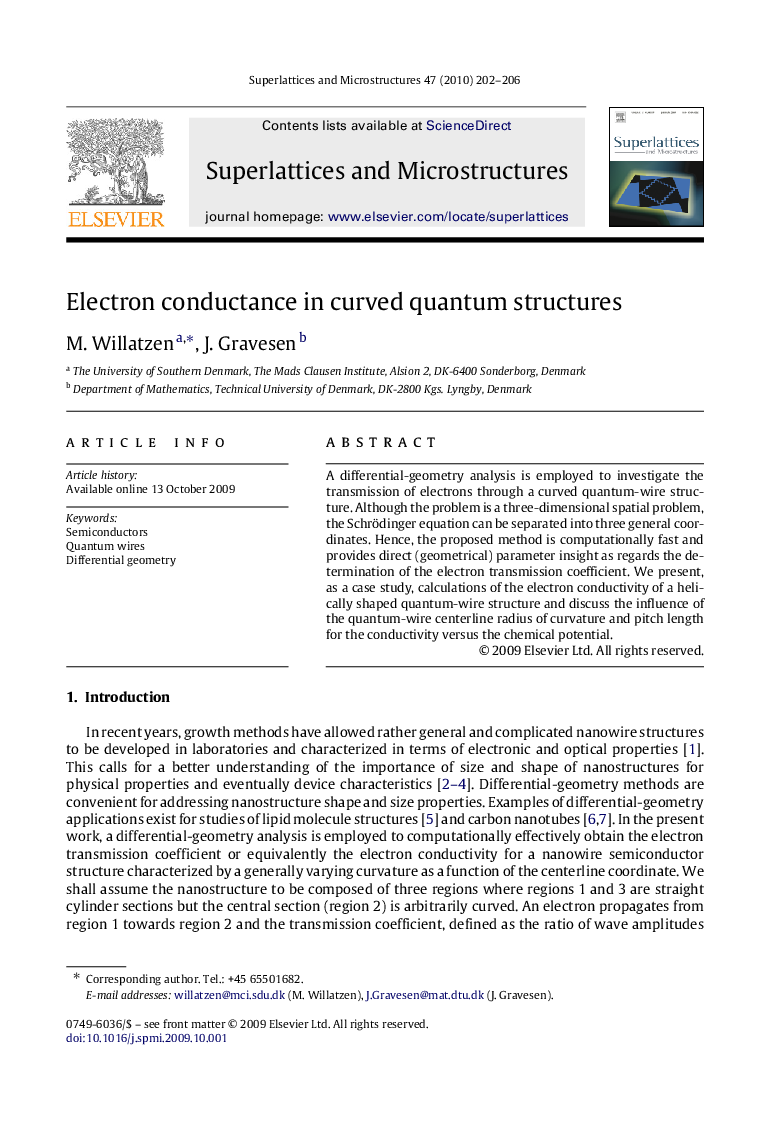| Article ID | Journal | Published Year | Pages | File Type |
|---|---|---|---|---|
| 1554703 | Superlattices and Microstructures | 2010 | 5 Pages |
Abstract
A differential-geometry analysis is employed to investigate the transmission of electrons through a curved quantum-wire structure. Although the problem is a three-dimensional spatial problem, the Schrödinger equation can be separated into three general coordinates. Hence, the proposed method is computationally fast and provides direct (geometrical) parameter insight as regards the determination of the electron transmission coefficient. We present, as a case study, calculations of the electron conductivity of a helically shaped quantum-wire structure and discuss the influence of the quantum-wire centerline radius of curvature and pitch length for the conductivity versus the chemical potential.
Related Topics
Physical Sciences and Engineering
Materials Science
Electronic, Optical and Magnetic Materials
Authors
M. Willatzen, J. Gravesen,
